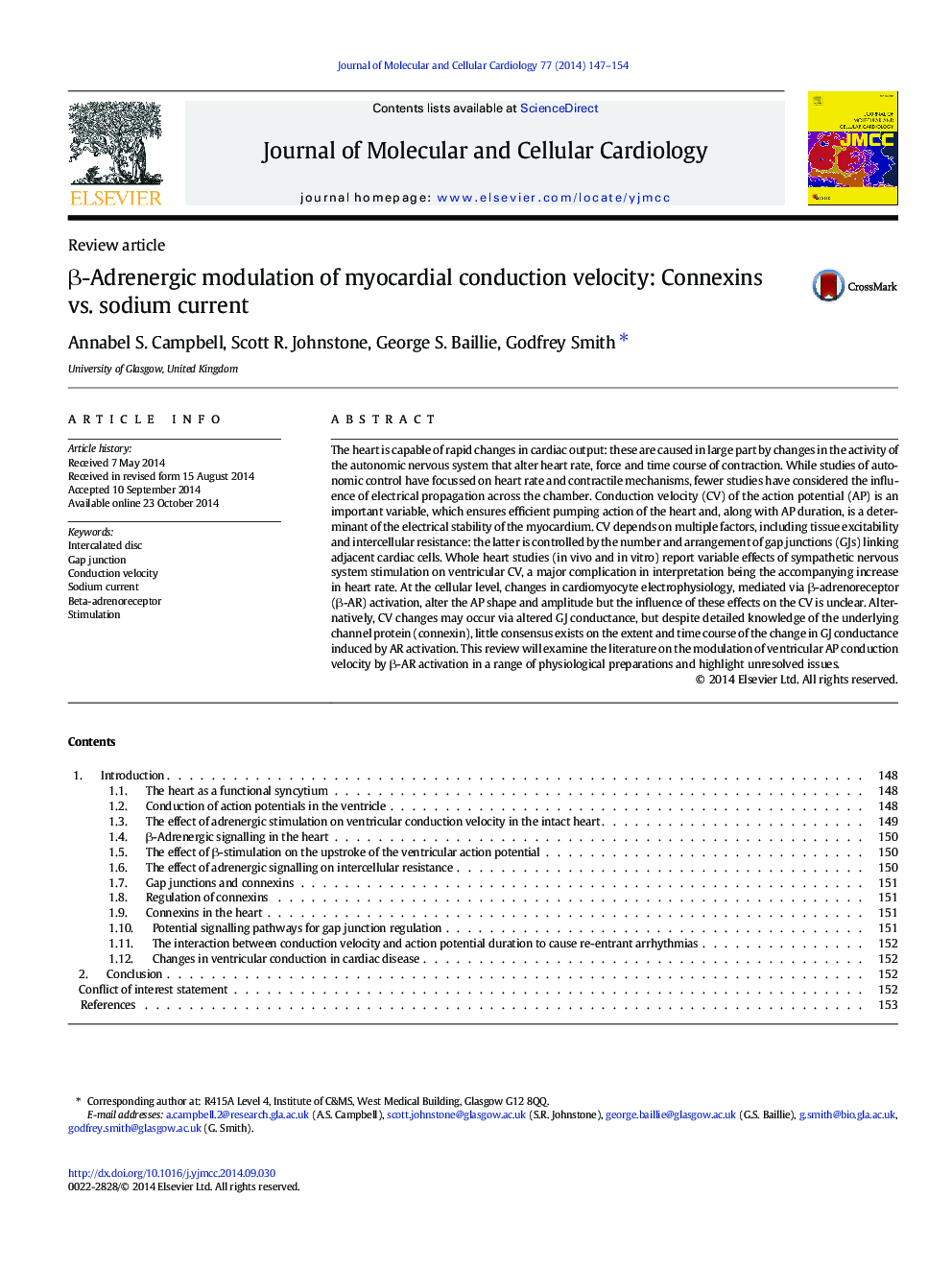| Article ID | Journal | Published Year | Pages | File Type |
|---|---|---|---|---|
| 8474539 | Journal of Molecular and Cellular Cardiology | 2014 | 8 Pages |
Abstract
The heart is capable of rapid changes in cardiac output: these are caused in large part by changes in the activity of the autonomic nervous system that alter heart rate, force and time course of contraction. While studies of autonomic control have focussed on heart rate and contractile mechanisms, fewer studies have considered the influence of electrical propagation across the chamber. Conduction velocity (CV) of the action potential (AP) is an important variable, which ensures efficient pumping action of the heart and, along with AP duration, is a determinant of the electrical stability of the myocardium. CV depends on multiple factors, including tissue excitability and intercellular resistance: the latter is controlled by the number and arrangement of gap junctions (GJs) linking adjacent cardiac cells. Whole heart studies (in vivo and in vitro) report variable effects of sympathetic nervous system stimulation on ventricular CV, a major complication in interpretation being the accompanying increase in heart rate. At the cellular level, changes in cardiomyocyte electrophysiology, mediated via β-adrenoreceptor (β-AR) activation, alter the AP shape and amplitude but the influence of these effects on the CV is unclear. Alternatively, CV changes may occur via altered GJ conductance, but despite detailed knowledge of the underlying channel protein (connexin), little consensus exists on the extent and time course of the change in GJ conductance induced by AR activation. This review will examine the literature on the modulation of ventricular AP conduction velocity by β-AR activation in a range of physiological preparations and highlight unresolved issues.
Related Topics
Life Sciences
Biochemistry, Genetics and Molecular Biology
Cell Biology
Authors
Annabel S. Campbell, Scott R. Johnstone, George S. Baillie, Godfrey Smith,
